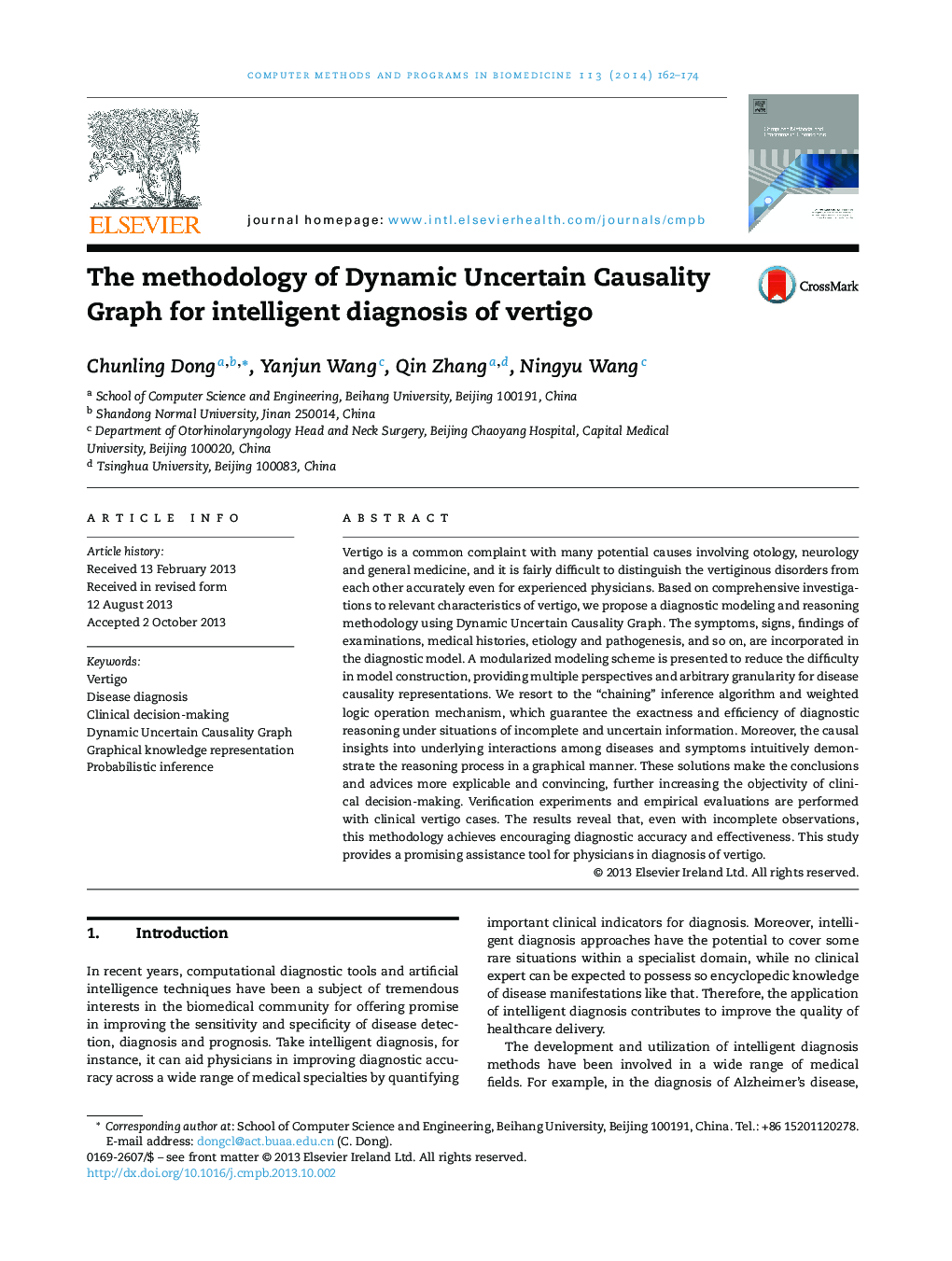| Article ID | Journal | Published Year | Pages | File Type |
|---|---|---|---|---|
| 10345375 | Computer Methods and Programs in Biomedicine | 2014 | 13 Pages |
Abstract
Vertigo is a common complaint with many potential causes involving otology, neurology and general medicine, and it is fairly difficult to distinguish the vertiginous disorders from each other accurately even for experienced physicians. Based on comprehensive investigations to relevant characteristics of vertigo, we propose a diagnostic modeling and reasoning methodology using Dynamic Uncertain Causality Graph. The symptoms, signs, findings of examinations, medical histories, etiology and pathogenesis, and so on, are incorporated in the diagnostic model. A modularized modeling scheme is presented to reduce the difficulty in model construction, providing multiple perspectives and arbitrary granularity for disease causality representations. We resort to the “chaining” inference algorithm and weighted logic operation mechanism, which guarantee the exactness and efficiency of diagnostic reasoning under situations of incomplete and uncertain information. Moreover, the causal insights into underlying interactions among diseases and symptoms intuitively demonstrate the reasoning process in a graphical manner. These solutions make the conclusions and advices more explicable and convincing, further increasing the objectivity of clinical decision-making. Verification experiments and empirical evaluations are performed with clinical vertigo cases. The results reveal that, even with incomplete observations, this methodology achieves encouraging diagnostic accuracy and effectiveness. This study provides a promising assistance tool for physicians in diagnosis of vertigo.
Related Topics
Physical Sciences and Engineering
Computer Science
Computer Science (General)
Authors
Chunling Dong, Yanjun Wang, Qin Zhang, Ningyu Wang,
